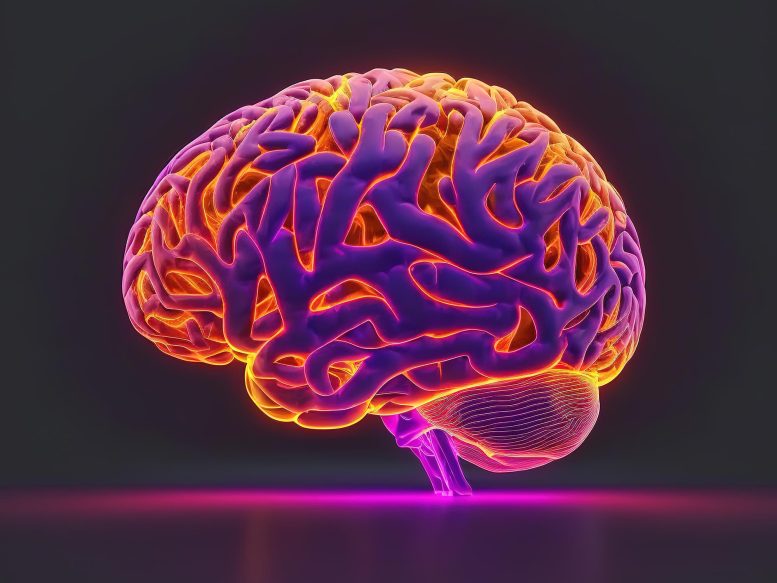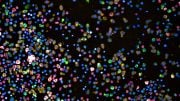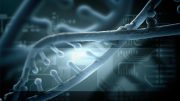
A recent research discovery indicates that sections of the prefrontal cortex compensate for hippocampal damage, a breakthrough that may aid researchers in devising innovative therapies for Alzheimer’s disease, stroke, and other brain-related disorders.
A new study shows that parts of the prefrontal cortex take over when the hippocampus is damaged, a finding that could potentially help scientists develop new treatments for Alzheimer’s disease, stroke, and other conditions involving damage to the brain.
When the brain’s primary “learning center” is damaged, complex new neural circuits arise to compensate for the lost function, say life scientists from the University of California, Los Angeles (UCLA) and Australia who have pinpointed the regions of the brain involved in creating those alternate pathways — often far from the damaged site.
The research, conducted by UCLA’s Michael Fanselow and Moriel Zelikowsky in collaboration with Bryce Vissel, a group leader of the neuroscience research program at Sydney’s Garvan Institute of Medical Research, appears this week in the early online edition of the journal Proceedings of the National Academy of Sciences.
The researchers found that parts of the prefrontal cortex take over when the hippocampus, the brain’s key center of learning and memory formation, is disabled. Their breakthrough discovery, the first demonstration of such neural-circuit plasticity, could potentially help scientists develop new treatments for Alzheimer’s disease, stroke, and other conditions involving damage to the brain.
For the study, Fanselow and Zelikowsky conducted laboratory experiments with rats showing that the rodents were able to learn new tasks even after damage to the hippocampus. While the rats needed more training than they would have normally, they nonetheless learned from their experiences — a surprising finding.
“I expect that the brain probably has to be trained through experience,” said Fanselow, a professor of psychology and member of the UCLA Brain Research Institute, who was the study’s senior author. “In this case, we gave animals a problem to solve.”
After discovering the rats could, in fact, learn to solve problems, Zelikowsky, a graduate student in Fanselow’s laboratory, traveled to Australia, where she worked with Vissel to analyze the anatomy of the changes that had taken place in the rats’ brains. Their analysis identified significant functional changes in two specific regions of the prefrontal cortex.
“Interestingly, previous studies had shown that these prefrontal cortex regions also light up in the brains of Alzheimer’s patients, suggesting that similar compensatory circuits develop in people,” Vissel said. “While it’s probable that the brains of Alzheimer’s sufferers are already compensating for damage, this discovery has significant potential for extending that compensation and improving the lives of many.”
The hippocampus, a seahorse-shaped structure where memories are formed in the brain, plays critical roles in processing, storing, and recalling information. The hippocampus is highly susceptible to damage through stroke or lack of oxygen and is critically involved in Alzheimer’s disease, Fanselow said.
“Until now, we’ve been trying to figure out how to stimulate repair within the hippocampus,” he said. “Now we can see other structures stepping in and whole new brain circuits coming into being.”
Zelikowsky said she found it interesting that sub-regions in the prefrontal cortex compensated in different ways, with one sub-region — the infralimbic cortex — silencing its activity and another sub-region — the prelimbic cortex — increasing its activity.
“If we’re going to harness this kind of plasticity to help stroke victims or people with Alzheimer’s,” she said, “we first have to understand exactly how to differentially enhance and silence function, either behaviorally or pharmacologically. It’s clearly important not to enhance all areas. The brain works by silencing and activating different populations of neurons. To form memories, you have to filter out what’s important and what’s not.”
Complex behavior always involves multiple parts of the brain communicating with one another, with one region’s message affecting how another region will respond, Fanselow noted. These molecular changes produce our memories, feelings, and actions.
“The brain is heavily interconnected — you can get from any neuron in the brain to any other neuron via about six synaptic connections,” he said. “So there are many alternate pathways the brain can use, but it normally doesn’t use them unless it’s forced to. Once we understand how the brain makes these decisions, then we’re in a position to encourage pathways to take over when they need to, especially in the case of brain damage.
“Behavior creates molecular changes in the brain; if we know the molecular changes we want to bring about, then we can try to facilitate those changes to occur through behavior and drug therapy,” he added. I think that’s the best alternative we have. Future treatments are not going to be all behavioral or all pharmacological, but a combination of both.”
Fanselow and Vissel have worked closely over the last several years.
Reference: “Prefrontal microcircuit underlies contextual learning after hippocampal loss” by Moriel Zelikowsky, Stephanie Bissiere, Timothy A. Hast, Rebecca Z. Bennett, Andrea Abdipranoto, Bryce Vissel and Michael S. Fanselow, 15 May 2013, Proceedings of the National Academy of Sciences.
DOI: 10.1073/pnas.1301691110
The research was funded by the National Institute of Mental Health (grant MH 62122), part of the National Institutes of Health, and by the National Science Foundation (EAPSI award 0914307 to Zelikowsky).









Rewiring in frontal lobe of brain doing learning skills is found to be possible in formation of new neural network in primary learning centers. It is a great idea, but rewiring in other areas of brain which does motor functions when damaged is not found. Particularly after paralysis the nerves can be energized by systematic physiotherapy exercises. For the learning centers the process of exercise is nothing but learning new things which will enable rewiring. In Alzheimer`s disease the formation of plaques of Ameloid-B in the brain nerve cells should be first attended medically in addition to learning process. Probably before the onset of Alzheimer’s it is the continuous learning through life, which will form regeneration of new brain nerve cells and may delay onset of disease. Thank You.